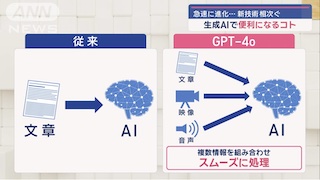Apr 03 (News On Japan) - The emergence of blockchain technology marks a transformative shift away from conventional centralized systems in our approach to digital transactions.
Operating on a decentralized and distributed ledger, blockchain enhances transparency and trust by eliminating the need for intermediaries. Against the backdrop of global concerns about climate change, the synergy between blockchain and renewable energy unfolds as a solution that not only addresses challenges within the energy sector but also sets the stage for a sustainable and decentralized energy future. Amid ongoing transformations in the energy sector, the integration of blockchain becomes a pivotal force. This section explores the fusion of blockchain technology with renewable energy, illuminating its potential to reshape traditional paradigms and contribute to a more resilient and environmentally conscious energy landscape. In this dynamic environment, quantum-evortex.com, an investment education firm, offer valuable insights, empowering individuals to navigate the complexities of blockchain and renewable energy integration for a sustainable future.
Blockchain Basics
Understanding Blockchain Technology
- Decentralization and Distributed Ledger - Blockchain's essence lies in decentralization, where information is stored across a network of computers, ensuring no single entity has control. The distributed ledger, a core component, facilitates a transparent and tamper-resistant record of transactions.
- Smart Contracts and Automation - Smart contracts, self-executing agreements with coded terms, automate processes without intermediaries. This not only expedites transactions but also ensures a high level of accuracy and security.
How Blockchain Ensures Transparency and Security
- Immutable Record Keeping - The immutability of blockchain records means once a block is added to the chain, it cannot be altered. This feature ensures a reliable and unchangeable history of transactions.
- Consensus Mechanisms - Consensus mechanisms, such as Proof of Work or Proof of Stake, validate transactions, enhancing security and establishing trust among participants.
Renewable Energy Exchange
Traditional Energy Exchange Challenges
- Centralized Systems and Intermediaries - Traditional energy exchange mechanisms often rely on centralized systems and intermediaries, introducing inefficiencies and potential points of failure.
- Lack of Transparency and Trust - The opacity in traditional energy markets leads to a lack of trust among participants, hindering the development of a more open and collaborative energy ecosystem.
Role of Blockchain in Overcoming Challenges
- Decentralization and Peer-to-Peer Transactions - Blockchain's decentralized nature facilitates peer-to-peer transactions, eliminating the need for central authorities and fostering a more democratic energy exchange.
- Transparency and Traceability - Blockchain's transparency ensures that each participant in the energy exchange can trace the origin and destination of energy, promoting accountability.
Blockchain in Peer-to-Peer Energy Exchange
Concept of Peer-to-Peer Energy Exchange
Peer-to-peer energy exchange leverages blockchain to enable direct transactions between energy producers and consumers. This section delves into the concept, emphasizing its potential to revolutionize the energy landscape.
Benefits of Peer-to-Peer Transactions
Empowering Prosumers
Blockchain empowers prosumers—those who produce and consume energy—to engage in direct transactions, contributing to a more sustainable and locally driven energy ecosystem.
Efficient Resource Utilization
Peer-to-peer transactions enhance resource utilization efficiency, allowing for the direct and optimal allocation of energy resources.
Tokenization and Digital Assets in Renewable Energy
Tokenization Explained
Creating Digital Assets for Energy
Tokenization involves representing physical or digital assets on a blockchain. In the context of renewable energy, this can include tokenizing energy production units or renewable energy certificates (RECs).
Tokenized Renewable Energy Certificates (RECs)
Tokenized RECs on the blockchain provide a digital representation of the environmental attributes of renewable energy, making them tradable and accessible to a wider market.
Facilitating Tradable Renewable Energy Credits
The tokenization of renewable energy credits introduces a new dimension to the renewable energy market, fostering liquidity and tradability while maintaining the integrity of environmental attributes.
Real-world Applications and Implementations
Existing Blockchain Projects in Renewable Energy
Power Ledger
Power Ledger exemplifies how blockchain facilitates peer-to-peer energy trading, enabling communities to harness and share renewable energy resources efficiently.
WePower
WePower's blockchain-based platform focuses on tokenizing and trading green energy, offering a glimpse into the potential of blockchain in renewable energy markets.
Benefits and Challenges Faced by Early Adopters
Analyzing the experiences of early adopters reveals the tangible benefits and challenges associated with integrating blockchain into renewable energy systems, providing insights for future implementations.
Future Outlook and Potential Developments
Evolving Trends in Blockchain and Renewable Energy
This section explores emerging trends such as the convergence of blockchain with other technologies and regulatory advancements, shaping the trajectory of blockchain in the renewable energy space.
Potential Impact on the Global Energy Landscape
Delving into the potential global impact, this section examines how blockchain's integration with renewable energy can contribute to a more sustainable and resilient energy landscape.
Regulatory Considerations and Challenges
Addressing the regulatory landscape, this part discusses the challenges and considerations that policymakers, industry players, and stakeholders need to navigate for a seamless integration of blockchain in the energy sector.
Conclusion
In conclusion, this section succinctly encapsulates the essential takeaways, highlighting the profound impact of blockchain on the dynamics of renewable energy exchange. Emphasizing its transformative capacity, the narrative explores the pivotal role of blockchain in charting the course toward a sustainable and decentralized future for the renewable energy landscape. With a forward-looking perspective, the article underscores the significance of blockchain in reshaping traditional paradigms, fostering transparency, and promoting a more equitable and environmentally conscious energy exchange system.














